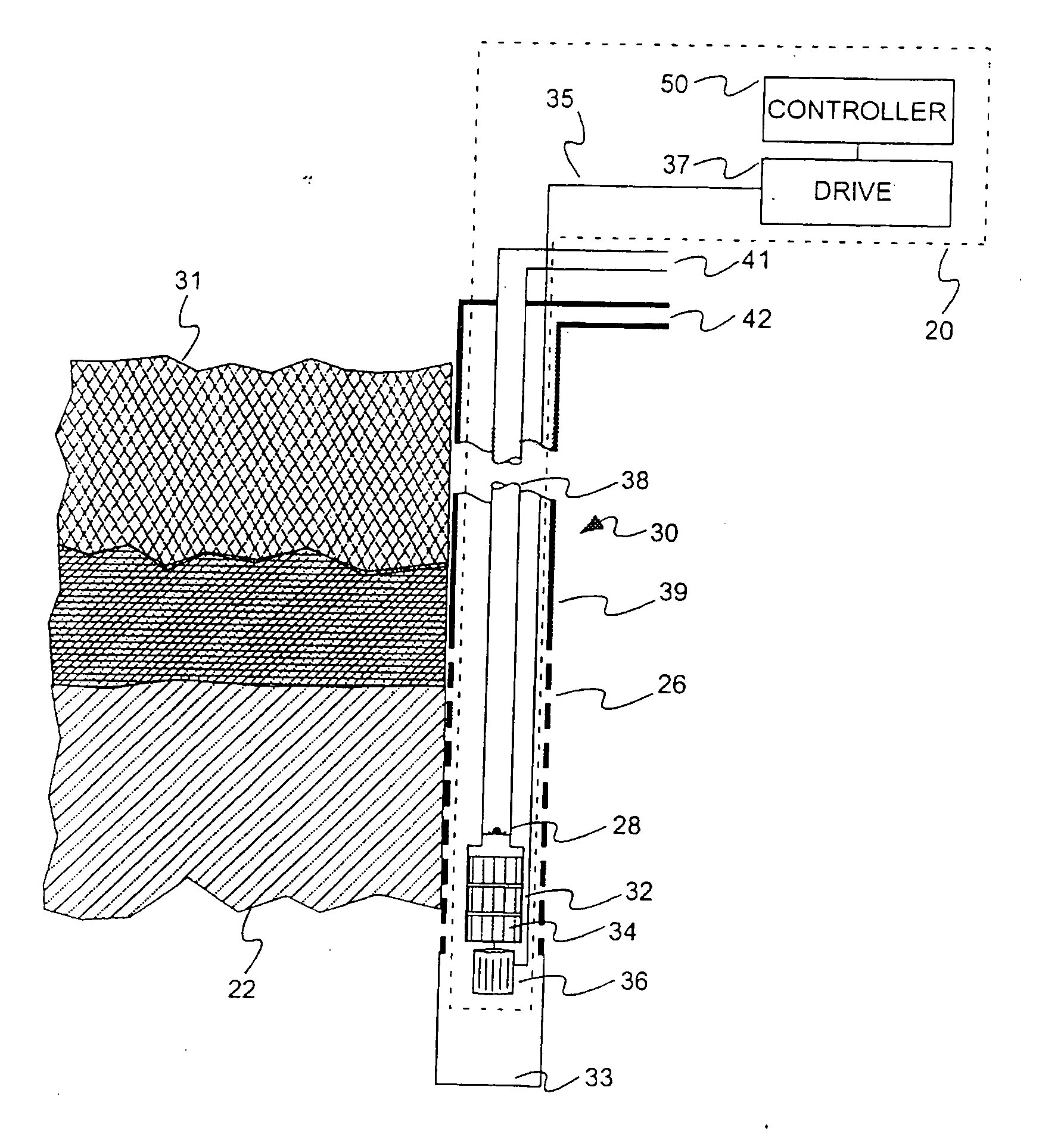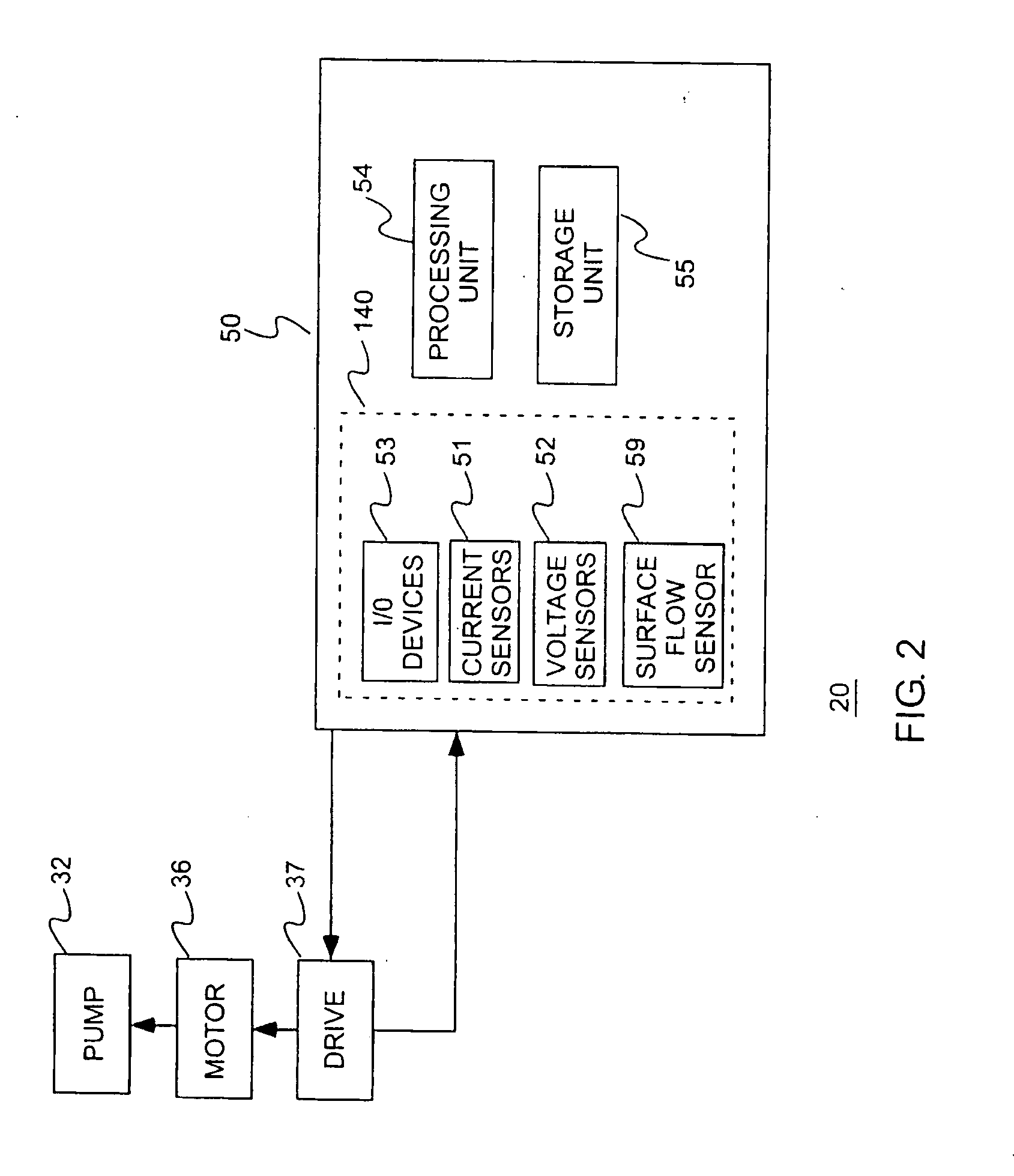Determination And Control Of Wellbore Fluid Level, Output Flow, And Desired Pump Operating Speed, Using A Control System For A Centrifugal Pump Disposed Within The Wellbore
a control system and centrifugal pump technology, applied in the field of pumping systems, can solve the problems of sensor or sensor placement being inconvenient or difficult to access, sensor(s) being exposed to a harmful environment, sensors adding to initial system cost and maintenance cost, etc., to enhance the market appeal of the apparatus, reduce the cost of maintenance, and reduce the effect of sensor placemen
- Summary
- Abstract
- Description
- Claims
- Application Information
AI Technical Summary
Benefits of technology
Problems solved by technology
Method used
Image
Examples
Embodiment Construction
[0077] Referring to FIG. 1, the present invention is described with reference to an oil well 30 wherein oil is to be pumped from an underground formation 22. The well includes an outer casing 39 and an inner tube 38 that extend from ground level to as much as 1000 feet or more below ground level. The casing 39 has perforations 26 to allow the fluid in the underground formation to enter the wellbore. It is to be understood that water and gas can be combined with oil and the pump can be used for other liquids. The control apparatus can also be used for pumping water only. The bottom of the tube generally terminates below the underground formations.
[0078] A centrifugal pump of the type known as an electric submersible pump (ESP) 32 is mounted at the lower end of the tube 38 and includes one or more centrifugal pump members 34 mounted inside a pump housing. The pump members are coupled to and driven by a drive motor 36 which is mounted at the lower end of the pump housing. The tube 38 ...
PUM
| Property | Measurement | Unit |
|---|---|---|
| length | aaaaa | aaaaa |
| length | aaaaa | aaaaa |
| length | aaaaa | aaaaa |
Abstract
Description
Claims
Application Information
 Login to View More
Login to View More - R&D
- Intellectual Property
- Life Sciences
- Materials
- Tech Scout
- Unparalleled Data Quality
- Higher Quality Content
- 60% Fewer Hallucinations
Browse by: Latest US Patents, China's latest patents, Technical Efficacy Thesaurus, Application Domain, Technology Topic, Popular Technical Reports.
© 2025 PatSnap. All rights reserved.Legal|Privacy policy|Modern Slavery Act Transparency Statement|Sitemap|About US| Contact US: help@patsnap.com



